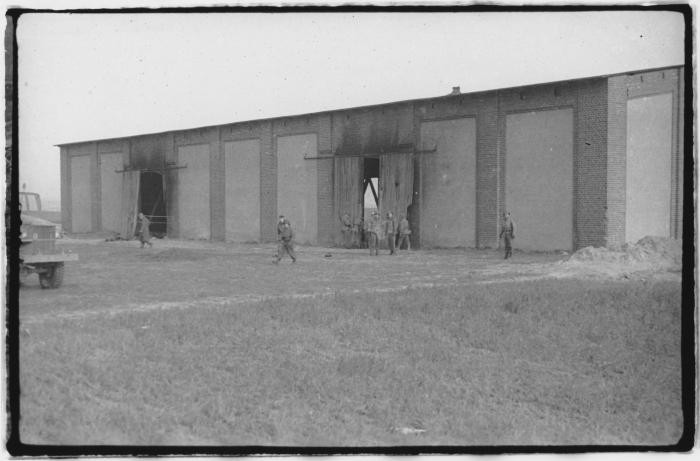
Gardelegen
In 1945, as Allied troops penetrated Nazi Germany, the SS began evacuating prisoners from concentration camps in outlying areas on death marches to the interior of the Reich. It was part of a desperate and hopeless effort to keep the war effort going and to prevent the inmates from falling into enemy hands, where they could testify against their persecutors.
Following the US Army's crossing of the Rhine River and push into central Germany, the SS camp administration at Dora-Mittelbau ordered the evacuation of prisoners from the main camp and a number of its affiliated subcamps on April 3 and 4th. The goal was to transport the inmates by train or by foot to the concentration camps in Bergen-Belsen, Sachsenhausen, or Neuengamme. Within days, some 4,000 prisoners from Dora-Mittelbau, its satellite camps, and a Neuengamme subcamp arrived in the Gardelegen area, where they had to dismount from the freight cars because the trains could not advance any further due to air raid damage to the rail lines. Greatly outnumbered by the prisoners, the SS guards began recruiting auxiliary forces from the local fire department, the air force, the aged home guard, the Hitler Youth, and other organizations to watch over the inmates. On April 13th, more than a thousand prisoners, many of them sick and too weak to march any further, were taken from the town of Gardelegen to a large barn on the Isenschnibbe estate and forced inside the building. The assembled guards then barricaded the doors and set fire to gasoline-soaked straw.
As the heat and flames expanded within the building, prisoners sought to escape the conflagration by digging under the barn's walls. They were killed by the guards. The next day, the SS and local auxiliaries returned to dispose of the evidence of their crime. They planned to incinerate what remained of the bodies and the barn, and kill any survivors of the blaze. The swift advance of the 102nd Infantry Division, however, prevented the SS and its accomplices from completely carrying out this plan.
On April 14th, the 102nd entered Gardelegen and, the following day, discovered the atrocity. They found the corpses of 1,016 prisoners in the still-smoldering barn and nearby trenches, where the SS had the charred remains dumped. They also interviewed several of the prisoners who had managed to escape the fire and the shootings.

Within days, US Army Signal Corps photographers arrived to document the Nazi crime and by April 19, 1945, the story of the Gardelegen massacre began appearing in the western press. On that day, both the New York Times and The Washington Post ran stories on the massacre, quoting one American soldier who stated:
I never was so sure before of exactly what I was fighting for. Before this you would have said those stories were propaganda, but now you know they weren't. There are the bodies and all those guys are dead.
On April 21, 1945, the local commander of the 102nd ordered between 200 and 300 men from the town of Gardelegen to give the murdered prisoners a proper burial. Over the next few days, the German civilians exhumed 586 bodies from the trenches and recovered 430 bodies from the barn, placing each in an individual grave. On April 25, the 102nd carried out a ceremony to honor the dead and erected a memorial tablet to the victims, which stated that the townspeople of Gardelegen are charged with the responsibility that the “graves are forever kept as green as the memory of these unfortunates will be kept in the hearts of freedom-loving men everywhere.” Also on April 25, Colonel George Lynch addressed German civilians at Gardelegen with the following statement:
The German people have been told that stories of German atrocities were Allied propaganda. Here, you can see for yourself. Some will say that the Nazis were responsible for this crime. Others will point to the Gestapo. The responsibility rests with neither—it is the responsibility of the German people....Your so-called Master Race has demonstrated that it is master only of crime, cruelty and sadism. You have lost the respect of the civilized world.
Critical Thinking Questions
Why did the Americans force German civilians to help with the clean-up of the site of the atrocity at Gardelegen?
What challenges did the Allied forces face when they encountered camps and sites of atrocities?
What challenges immediately faced survivors of the Holocaust?

